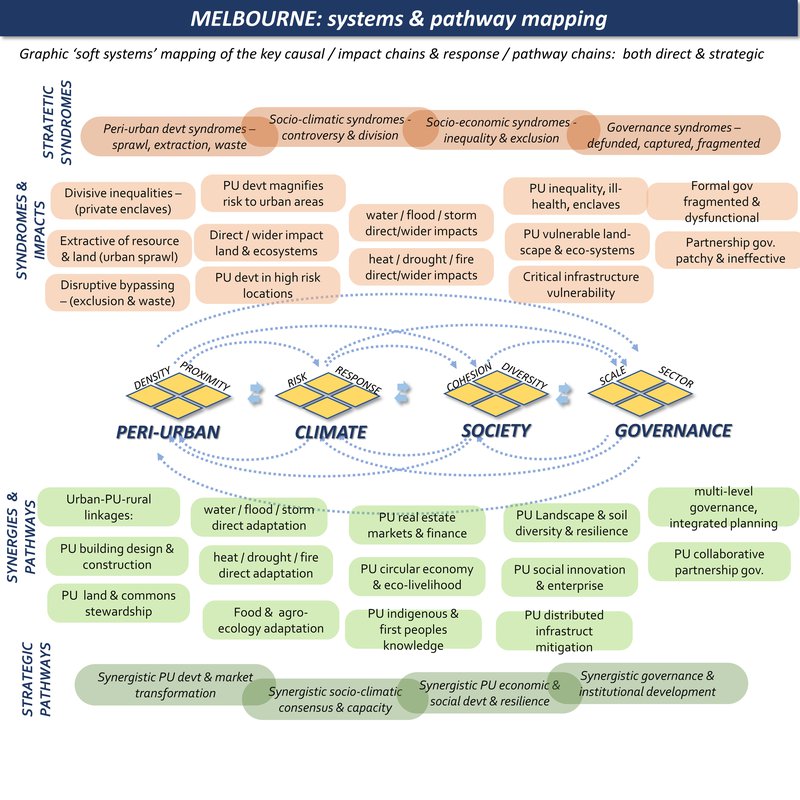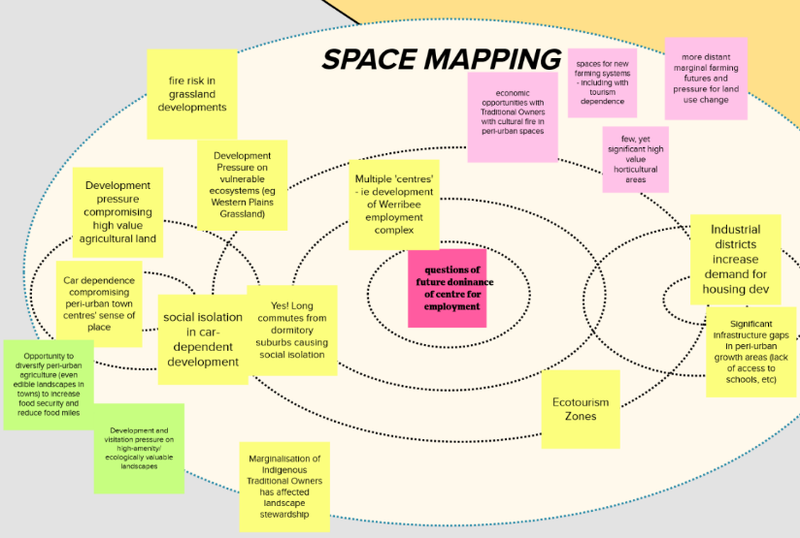
Adaptive Pathways
(With example section of the online workspace)
Urban-rural linkages in the peri-urban
- The city-region mapping shows a complex overlap and interaction of extended urban expansion / rural transformation: there may be great opportunities for new forms of urban-rural synergies and linkages.
Peri-urban stewardship of land & commons
- Marginalisation of Indigenous Traditional Owners has affected landscape stewardship
- Opportunity to diversify peri-urban agriculture (even edible landscapes in towns) to increase food security and reduce food miles
- Development and visitation pressure on high-amenity/ecologically valuable landscapes
sea level rise & coastal adaptation
- Industrial areas and critical infrastructures will need increasing levels of protection
- Older housing in lower income areas also may need a rethink on planning & investment.
landscape diversity & resilience
- there are landscapes falling apart in various ways on all sides, more so with the onset of climate change, calling for a dynamic integration of social, economic, ecological forces.
demographic shifts & new forms of eco-housing
- Social divides are already in evidence with the syndromes of suburbia: there may be opportunity for rethinking housing forms, finance and access to land for the upcoming generation .
Peri-urban real estate markets & insurance
- To look beyond dysfunctional peri-urban developments and disruption of land & ecosystems, the real estate sector can rethink its processes of social and ecological value creation. With rapidly increasing flood risk & vulnerability, the insurance sector also needs new forms of positive investment.
Circular economy & eco-livelihood
- There is a strong case for a peri-urban circular economy in Melbourne, with its combination of globalized industry and regionalized agriculture / forestry / ecosystems. This could provide an organizing principle for the climate-proofing of a new emerging peri-urban.
indigenous & first people knowledge
- It may be the traditional owners have keys to sustainable living in the new climate-challenged peri-urban
Multi-level governance, integrated planning.
- Bridging gaps between policy & politics, to improve the effectiveness of multi-level planning & government.
Collaborative governance, civil partnerships
- As an open thriving democracy with effective systems, it seems Australia can show some pathways for adaptive / collaborative forms of governance to respond to complex multi-level problems
However there are many embedded layers of elite power and wealth to respond to, also certain socio-cultural dynamics which bring gaps and barriers to the ideal of collaborative governance.

